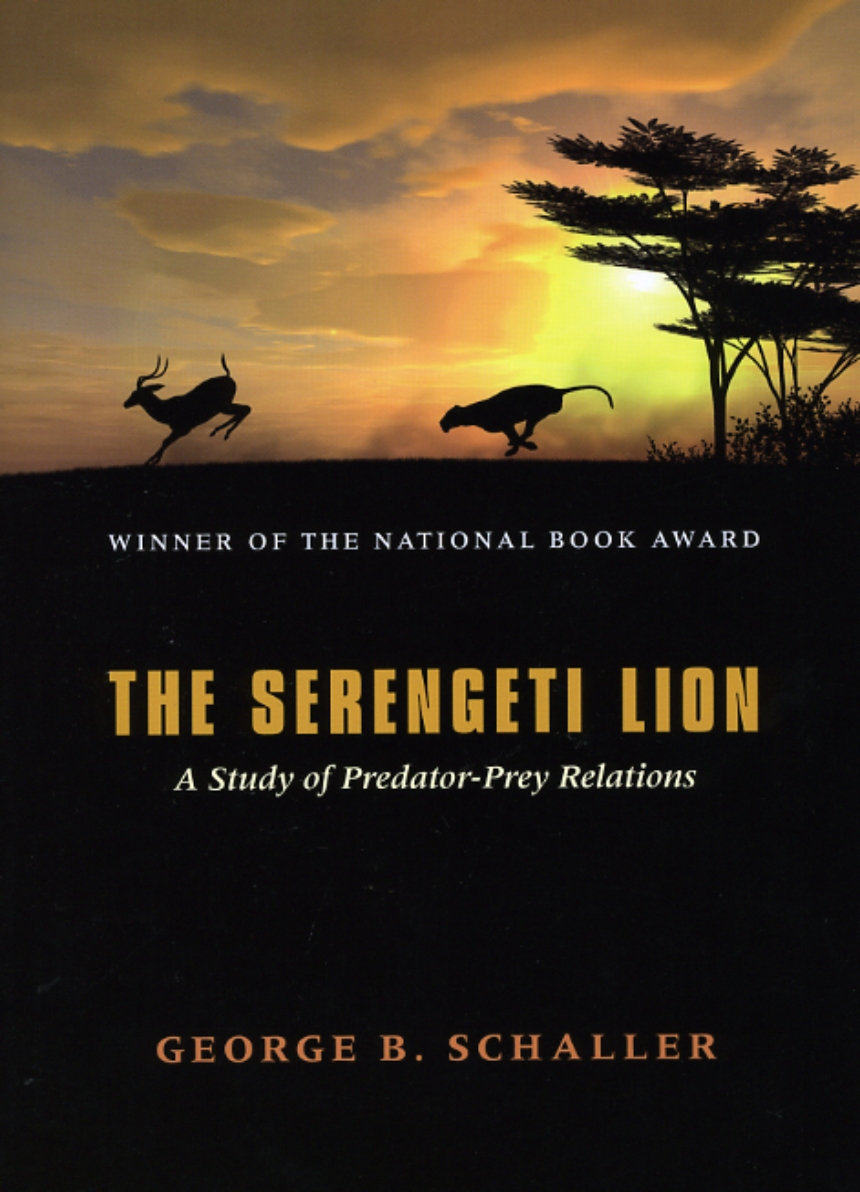The Serengeti Lion
A Study of Predator-Prey Relations
Based on three years of study in the Serengeti National Park, George B. Schaller’s The Serengeti Lion describes the vast impact of the lion and other predators on the vast herds of wildebeest, zebra, and gazelle for which the area is famous. The most comprehensive book available on the lion, this classic work includes the author’s findings on all aspects of lion behavior, including its social system, population dynamics, hunting behavior, and predation patterns.
“If you have only enough time to read one book about field biology, this is the one I recommend.”—Edward O. Wilson, Science
“This book conveys not only the fascination of its particular study of lion behavior but the drama and wonder and beauty of the intimate interdependence of all living things.”—Saturday Review
“This is an important book, not just for its valuable information on lions, but for its broad, open, and intelligent approach to problems that cut across the fields of behavior, populations, ecology, wildlife management, evolution, anthropology, and comparative biology.”—Richard G. Van Gelder, Bioscience
504 pages | 43 halftones | 6 3/4 x 9 1/2 | © 1976
Wildlife Behavior and Ecology series
Biological Sciences: Behavioral Biology, Natural History
Table of Contents
I. The Study
1. Introduction
2. The Serengeti Region
Physiography
Vegetation
Seasons
3. Study Methods
General
Tagging
Radio Telemetry
Food Habits
Age Classes
II. The Lion
4. Group Structure and Movement
The Pride
The Pride Area
The Nomad
5. Behavior Within the Group
Communication
The Daily Activity Pattern
Group Organization
Mating Behavior
Relations of Young to Pride
Play
6. Population Dynamics
Population Size
Population Composition
Reproduction
Mortality
Population Trend
7. Food Habits
The Prey Population
Food Habits
Predation in Relation to Sex, Age, and Health of Prey
8. The Hunt
Behavior of Prey
Main Environmental Factors Affecting the Hunt
Hunting Behavior
Hunting Success
Hunting for Large Prey
Relation of Prey Size to Sex of Lion Killing It
Learning to Hunt
Killing
Behavior at the Kill
III. Other Predators
The Leopard
Distribution and Numbers
Movement
Population Dynamics
Social Structure
Predation
10. The Cheetah
Distribution and Numbers
Movements
Population Dynamics
Social Structure
Predation
11. The Wild Dog
Distribution and Numbers
Movements
Population Dynamics
Social Structure
Predation
12. Other Predators
Spotted Hyena
Man
Jackals
Other Mammals
Reptiles and Birds
IV. Summary and Conclusions
13. Dynamics of Predator Social Systems
Social System
Social Structure
Communication
Land Tenure System
Population Dynamics
Hominid Behavior
14. The Dynamics of Predation
Ecological Separation of Predators
Antipredator Behavior
Sex, Age, and Health of Prey Killed by Predators
The Impact of Predation on Prey Populations
Conclusion
Appendixes
Appendix A. Common and scientific names of wild mammals, birds, and reptiles mentioned in the text
Appendix B. Tables 1 to 79
Appendix C. An estimate of animal numbers and biomass in the Serengeti Park made by Hendrichs (1970)
References Cited
Index
